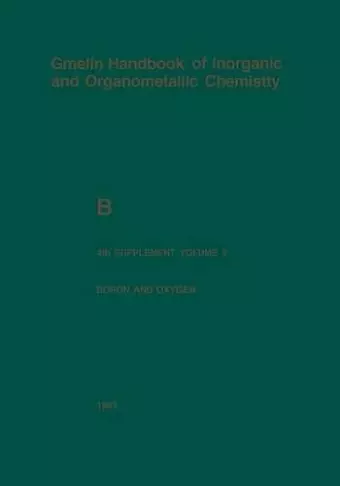Boron and Oxygen
Comprehensive updates on boron-oxygen systems and compounds
Gert Heller author R Bohrer author Jürgen Faust editor Kurt Niedenzu editor
Format:Paperback
Publisher:Springer-Verlag Berlin and Heidelberg GmbH & Co. KG
Published:3rd Oct '13
Currently unavailable, our supplier has not provided us a restock date

This volume of Boron and Oxygen updates previous literature on boron-oxygen systems and includes significant developments in the field.
Volume 2 of the Boron and Oxygen 4th Supplement to the Gmelin Handbook serves as a comprehensive update on boron-oxygen systems, detailing literature published up to 1988. This edition also includes insights into significant advancements up to mid-1992, particularly highlighting compounds such as ~-Ba3[B306h and U[B305J, which have garnered attention due to their nonlinear optical properties. By offering an extensive overview of these developments, the volume enhances the understanding of boron compounds and their applications in various fields.
The publication aims to complement the previous Boron and Oxygen 3rd Supplement Volume 2, filling in gaps and addressing alternative formulations commonly found in original literature. Many borates, for instance, do not fit neatly into heteropolar or covalent categories, creating challenges in classification. As a result, the use of brackets in chemical notation may not accurately represent the true nature of these compounds, reflecting the complexity of boron chemistry.
Future volumes, including Volume 1, which focuses on systems with hydrogen and noble gases, will further enrich this series. Additionally, Volume 3a and 3b, along with Volume 4, covering various boron compounds, have already been released. Each volume will be supplemented by a formula index, and adherence to IUPAC nomenclature ensures consistency throughout the series, making it a valuable resource for researchers and professionals in the field of chemistry.
ISBN: 9783662061527
Dimensions: unknown
Weight: unknown
301 pages
8th ed. 1993